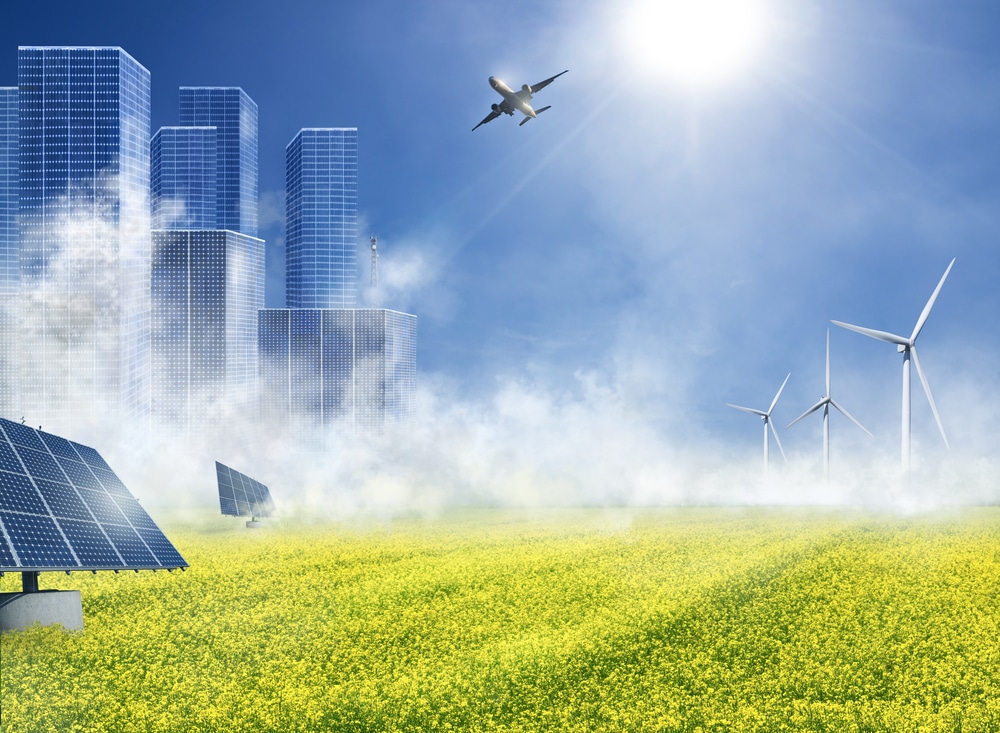To achieve a carbon-neutral future, looking to the skies is going to be integral.

Air travel has come a long way since the pioneering days of the 1960s, with modern jet aircraft around 80 per cent more fuel-efficient than those first commercial planes. Sustainable aviation fuels are also in development, using sources like algae, jatropha or waste by-products that can reduce the carbon footprint of planes by another 80 per cent.
Despite these advances, the aviation industry is responsible for 12 per cent of all global emissions from transport, producing around 915 million tonnes of CO2 annually. So is there a chance that one day commercial airliners could be powered by the sun instead of fuel?
As we explore innovative solutions for eco-friendly aviation, it’s noteworthy to consider the broader spectrum of sustainable practices. For those interested in reducing their carbon footprint on a personal level, considering solar options for homes and businesses could be a meaningful step. Get FREE solar quotes from Energy Matters and contribute to environmental efforts in your own way.
The genesis of solar-powered air travel
The journey towards solar air travel began back in 2008, but the idea was hatched many years before.
The idea came from a hot air balloon and an intrepid Swiss explorer, psychiatrist and environmentalist Bertrand Piccard. He drew inspiration from his 1999 trip around the world in a balloon, which proved a frustrating experience as he kept losing power due to lack of fuel. So he thought back then, “why not do away with the fuel?”
Piccard partnered with Swiss Federal Institute of Technology engineer, entrepreneur and Swiss Air Force pilot André Borschberg to make air travel powered by the energy of the sun possible.
Fast forward to 2008, and Piccard announced his latest venture, Solar Impulse – a company that was developing an aircraft capable of flying around the world without a drop of fuel.
The plane is an aircraft that utilises the energy of the sun to fly day and night without fuel. It has the wingspan of a B-747 jumbo jet (saddled with 17,000 solar cells), but only weighs as much as a car. The Swiss team behind this project wanted to show that clean technologies could achieve impossible goals – and they succeeded.
The prototype plane, Solar Impulse 1, was engineered to stay in the air for up to 36 hours and conducted its maiden flight in 2009. In 2010 Impulse 1 flew an entire diurnal solar cycle (any pattern that recurs every 24 hours due to one complete rotation of the planet Earth around its axis), which included nine hours of night flying.
June 15 brought about some major achievements, but also some significant learnings. First, Impulse was able to traverse Asia and complete its longest journey, Japan to Hawaii, but the plane suffered thermal damage in that flight. So a battery cooling system was installed, and Impulse 2 was born, completing many trips before finally succeeding in its around-the-world adventure. That 17-stage journey traversed 42,000km, four continents, three seas and two oceans.
NOVA has since documented its achievements and accomplishments in a documentary called The Impossible Flight.
The next evolution of the solar-powered aircraft
Following on from Piccard and Borschberg is Swiss countryman, SolarStratos founder and self-described explorer Raphaël Domjan. His goal is to reach the edge of space in a plane powered by the sun.
“The goal is to go as high as possible. We think that we can go between 80 and 20km high,” he said.
“It’s not possible to go into the stratosphere with a normal aircraft. When you climb you have less oxygen, so the power of the engine is decreasing. So the best way to go really high is with solar aircraft and with electric aircraft.”
Domjan views himself as an adventurer and an explorer, while the modus operandi of his company is more centred around promoting sustainable energy sources. This project is considered a means to satisfy both of those goals, but is not a realistic pathway towards sustainable air travel. Hydrogen, Domjan says, holds the key to that.
“We don’t think the future of aeronautics will be in solar. We think it will be in electric aircraft, using hydrogen, as an example. We think this is the future of aircraft that will fly without CO2 and without noise,” he said.
How Australia could be the pioneers of sustainable air travel
Green hydrogen is being touted as the game-changing sustainable energy source of the future. When it is created using renewable energy sources, it becomes a renewable energy source all on its own and can be used to power homes, businesses and even make green steel.
Australia is poised to be a global hydrogen powerhouse thanks to our abundance of space and renewable energy projects required to create green hydrogen. We have already signed lucrative agreements with Asian nations, including Japan, Vietnam and Korea, and we could be at the centre of any hydrogen fuel-based aircraft model.
When it comes to your home or business, solar power is a great way to generate your own clean electricity and sell any excess back to the grid. As a result, you’ll be saving money while reducing your impact on the environment.
Call us today on 1800 EMATTERS and get a quick quote. You can also email our friendly team for expert, obligation-free advice.











































